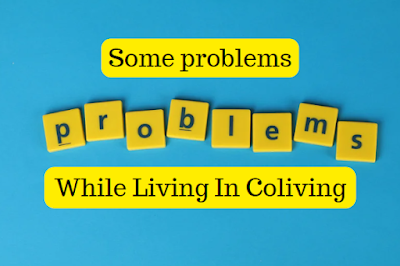Some Major Problems & Cons of Living In Coliving
Living in a coliving arrangement can offer numerous benefits, such as cost savings, community interaction, and shared resources. However, like any living situation, it also comes with its challenges. The biggest problems people may face while living in coliving spaces include:
- Privacy concerns: Sharing living spaces with others may compromise personal privacy. Limited personal space, shared common areas, and the constant presence of others can be challenging for individuals who value solitude and personal time.
- Different lifestyles: Coliving often involves people with diverse backgrounds, routines, and lifestyles. Conflicting schedules, noise preferences, and cleanliness habits can lead to tensions and disagreements among residents.
- Communication issues: Effective communication is crucial in shared living spaces. Misunderstandings, lack of communication about shared responsibilities, and unclear expectations can create problems and lead to conflicts.
- Noise and disturbances: Shared living spaces can be noisy, especially if residents have different schedules or preferences regarding quiet hours. Noise disturbances can affect sleep, work, and overall well-being.
- Cleaning and maintenance: Maintaining a clean and organized living environment requires cooperation among residents. Differing standards of cleanliness and responsibility for shared spaces can result in conflicts and tension within the community. Also, learn how to maximize space efficiency while living in coliving.
- Unequal resource usage: Issues may arise when some residents use shared resources, such as kitchen appliances, bathroom facilities, or common areas, more than others. Establishing fair usage guidelines and ensuring everyone contributes equally can be challenging.
- Conflict resolution: Living in close quarters with others increases the likelihood of conflicts. The lack of a structured conflict resolution process or an unwillingness to address issues openly can lead to unresolved tensions and a deteriorating living environment.
- High turnover: Coliving spaces may experience a higher turnover of residents compared to traditional housing arrangements. Frequent changes in the community dynamic can disrupt the sense of stability and cohesion. You should also look at some economic benefits of living in coliving.
- Limited personalization: Coliving spaces often come furnished, and residents may have limited control over the decor or layout of their living spaces. This lack of personalization can be a challenge for individuals who value expressing their identity through their living environment.
Final Words
To mitigate these issues, effective communication, clear guidelines, and a strong sense of community are essential. Establishing ground rules, fostering open communication channels, and addressing conflicts promptly can contribute to a more harmonious coliving experience.
Must Read: Coliving vs Renting Cost (Comprehensive Financial Analysis)

Comments
Post a Comment